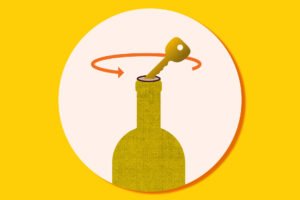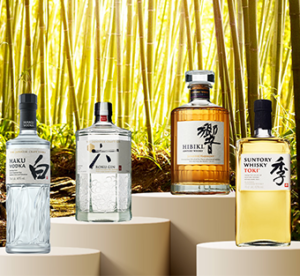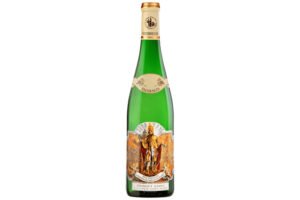Your Guide to the Langhe Wine Region
[ad_1]

The Langhe wine region provides the perfect terroir in which to grow Nebbiolo grapes for two of Italy’s most powerful wines—Barolo and Barbaresco
There is something majestic about a mist-veiled landscape—and about the grapes that thrive within it. The fog-steeped hills and castles of the Langhe wine region seem a more likely place for mystery than winemaking mastery, but this UNESCO World Heritage Site is the origin of some of Italy’s best and longest-lived wines.
The Langhe is one of the more southerly subregions of the Piedmont appellation in northern Italy. It boasts a long viticultural history and the perfect conditions for growing one of the more temperamental grape varieties—Nebbiolo. In fact, it may even have been the birthplace of this particular variety.
It’s no secret that the Piedmont, as a whole, has a reputation for producing some truly excellent red Italian wines. But for the serious collector, wines specifically from the Langhe offer a singular experience.
The Terroir of the Langhe Wine Region
Langhe wines owe much of their character to the unique environmental factors present in this particular region. Located east of the Tanaro river and south of the town of Alba, the hills that give this region its name (“langhe” is the plural of “langa”—low-lying hills) have also prevented modern technology from replacing traditional farming methods. Automated machinery cannot handle the uneven slopes, so much of the labor of growing and harvesting is still done by hand.
As for the soil these hills contain, the makeup of this region is largely limestone and clay. However, certain vineyards have the advantage of a more complex subsoil consisting of sulfur sands, marl, and chalk—all of which offer improved drainage that keeps the flavors of the grapes nicely concentrated.
Finally, the cool, foggy climate of the Langhe—a gift from the Alps just north of this region—provides the grapes with structure and acidity. This is what gives the best Langhe wines their flavor complexity and, in some cases, impressive longevity.
The Grapes and Wines of the Langhe
Nebbiolo is by far the local favorite, but other red grape varieties such as Dolcetto, Barbera, and Freisa are also grown in the Langhe, along with white varieties such as Arneis, Favorita, and Chardonnay. International varieties sometimes supplement these locally grown grapes, but this is more of an exception than the rule.
A similarly wide variety of wines are made here, some of which are better to drink young, while others may need decades of aging before they reach their peak potential. Below, you’ll find an overview of the most prevalent wines produced in the Langhe, sorted by their estimated longevity for easy reference:
| Langhe Wines to Age Before Drinking | Langhe Wines to Drink Young |
|
|
As with the grapes, a wide variety of wines may be produced here, but there are two clear leaders—both in terms of how widely they are produced and how highly they are rated. Barolo and Barbaresco wines, some of the longest-lived wines in the world, are intense Nebbiolo-based wines not for the faint of heart. Opened too soon, these wines can be palate-numbingly tannic. But, given the respect and patience they deserve, a top-quality Barolo or Barbaresco wine from the Langhe could easily become the crowning jewel of any proud collector’s cellar.
The Best Langhe Wine Producers and Vintages
In a region as bountiful with great wines as the Langhe, it can be difficult to say with any real certainty which wines and producers are unequivocally the “best.” Ultimately, the vintages and vintners that will prove the most collectible will be determined by your own unique taste (or that of your buyers, if you plan to resell).
However, such knowledge only comes with experience. In the meantime, any one of the highly acclaimed producers listed below can provide a safe starting point for your collection, in terms of both quality and potential profitability. Each producer has been listed in alphabetical order for ease of reading, and the vintages we’ve recommended for each are arranged in order of their rating on Wine Advocate (beginning with the highest rated for each producer).
| Producer | Wine Varieties | Recommended Vintages |
| Domenico Clerico | Barolo, Barbera, Dolcetto, and Arte | 2010 Barolo Per Cristina
2007 Barolo Ciabot Mentin Ginestra 2015 Barolo Ciabot Mentin 2016 Barolo Aeroplan Servaj 2016 Barolo Ciabot Mentin |
| Elio Altare | Barolo and Langhe Nebbiolo, but also makes Barbera d’Alba, Dolcetto d’Alba, and a few other red blends | 2010 Barolo Cerretta
2016 Barolo Cannubi 2016 Barolo Unoperuno 2009 Barolo Cerretta 2007 Barolo Brunate |
| Gaja | Barolo, Barbaresco, Langhe Nebbiolo, Chardonnay, Brunello di Montalcino, Cabernet Sauvignon, and various proprietary blends | 2016 Barolo Sperss
1997 Sori Tildin 1997 Sperss 2016 Barbaresco Sorì San Lorenzo 2010 Sori San Lorenzo |
| Roberto Voerzio | Barolo | 2008 Barolo Brunate
2007 Barolo Brunate 2007 Barolo Cerequio 2004 Barolo Sarmassa 1997 Barolo Riserva Vecchie Viti dei Capalot e delle Brunate |
| Vietti | Barolo | 2016 Barolo Rocche di Castiglione
2009 Barolo Riserva Villero 2007 Barolo Riserva Villero 2013 Barolo Riserva Villero 2010 Barolo Riserva Villero |
If you are especially interested in Nebbiolo wines, Gaja is one of the most prolific producers in the region, offering numerous options. In addition to the vintages listed above, their Barbaresco, Barolo, and Langhe Nebbiolos are highly praised and consistent in quality.
Regardless of your preferred wine or producer, however, there is one more thing to consider when collecting wines from the Langhe region—particularly those with higher aging potential.
Investing in Long-Lived Langhe Wines
If you’re completely new to collecting Langhe wines (or the serious collecting of any type of wine), you may wish to begin with some of the more youthful wines mentioned in this post, as they will require a much smaller investment of both time and money for cellaring. Langhe Nebbiolo wines, in particular, are often among the most approachable wines from this region, both in terms of taste and cost.
However, if you are ready for a more serious investment—one that may, in turn, yield higher profits—few wines compare to the longevity and assertive elegance of a good Barbaresco or Barolo from the Langhe. Not only are these wines incredibly long-lived, with some maturing for up to half a century, they also tend to appreciate steadily. Top-rated vintages purchased for a few hundred dollars will often resell for thousands.
For optimal return on investment, be sure to take every precaution to preserve the provenance of your wine. Consider having your wine shipped under bond, perhaps directly from a producer, to minimize the chances of a mishap occurring during transportation. This option also grants you a paper trail that can prove to potential buyers that your wine has always been treated with the utmost care and professionalism. If you intend to drink, rather than sell, your wine, buying ex-château wines provides the added benefit of a shorter wait time, as most producers wait to sell these wines until they are mature.
And if you are confident in your choice of wine, you may also want to consider buying case quantities. Not only are cases easier to keep organized, they also tend to be more cost-effective than purchasing the same number of individual bottles.
Finally, be sure to take advantage of professional storage services to keep your bottles in perfect condition right up to the day you intend to open or sell them. Regardless of whether you’re buying a young wine you can open in a few years or a Barolo or Barbaresco you may need to keep for several decades, utilizing professional cellar space from a trustworthy provider ensures your investment will be kept safe until the time is right.
Whether you are starting your high-end wine collection or adding to an established portfolio, Vinfolio is your partner in buying, selling, and professional storage. Contact us today to get access to the world’s finest wine.
[ad_2]




